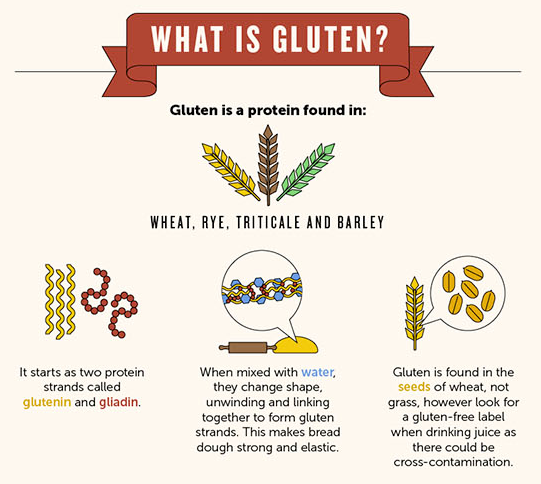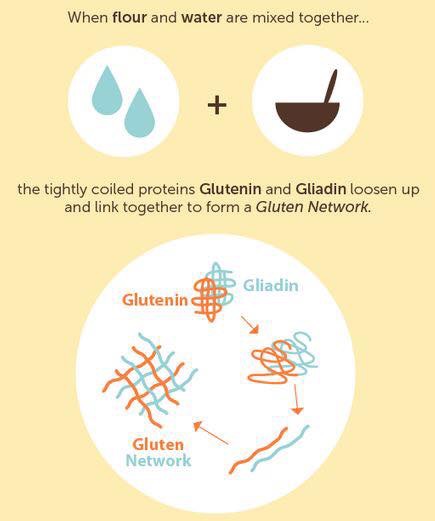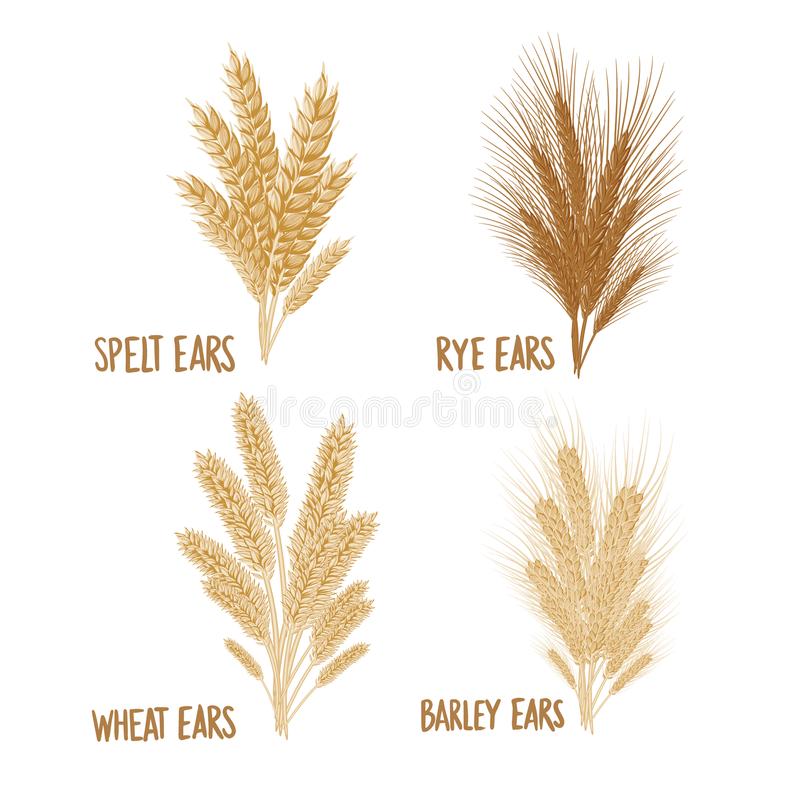Gluten is a collection of proteins (the long amino-acid chains gliadins and glutenins) that make bread rise and give the characteristic chewy texture to baked goods.
These proteins are vital to the binding and the rising of baked goods made with wheat based flours. (Read All about flours here).

Gluten develops with the addition of liquid in a dough. It creates stretchy elastic bands that trap the gas released by activated yeast. This is what helps a bread rise and gives it structure.

While gluten formation is important for bread baking, it is not desirable in a soft and tender cake.
That is the reason that cakes are not meant to be beaten for long, once the liquids are added to the batter. It is also the reason for choosing either all purpose flour or cake flour for a cake. The protein in these flours is less than that of bread flour or whole wheat flour.
Some wheat based flours are All purpose flour, cake flour, bread flour, whole wheat flour, semolina, Graham flour, White wheat flour etc.
Wheat contains the most gluten, but some other grains also contain lower amounts of it. These include spelt, rye, barley and triticale (a wheat-rye hybrid).

Oats, while gluten free by themselves are usually planted alongside wheat and harvested at the same time, thus resulting in cross contamination.
If you use oat flour in gluten free baking, choose one that is certified gluten free.
Do leave me a question or a comment! I’d love your feedback.

